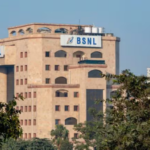
India’s interbank traders are turning their attention to the dollar-rupee forward market, even as the spot market stays stuck in a narrow range. So far in June, the rupee has floated between 85.30 and 86.02 against the U.S. dollar. Meanwhile, realized volatility has dropped to 4.5%—the lowest in about six weeks.
The action has shifted. And it’s not hard to see why.

Why the Forward Market Is Heating Up
With the spot price lacking direction due to two-way flows and no clear global cues, interbank traders are now more active in the forward market. This is where bets are placed on the future exchange rate of the rupee. And things are getting interesting.
Forward premiums—what you earn for locking in a future dollar-rupee rate—are sliding. The 1-year implied yield recently fell to its lowest in nearly a year. The 1-month premium is also down about 4 paisa, touching levels last seen in November.
Why? A lot of it ties back to the Reserve Bank of India’s surprise rate cut last week. Add to that the shifting expectations around U.S. Federal Reserve rate cuts, and you get a recipe for volatility—just not in the spot market.
For regular folks or exporters, this means your future earnings from overseas may fetch you less rupees—if you haven’t locked in rates already.
Also Read India Hit by Double Shock: US-China Deal Drama and Iran’s War Threats Shake Sensex!
What’s the Risk?
Falling forward premiums hurt the rupee’s appeal in carry trades—strategies where investors profit from interest rate differences between countries. When that edge vanishes, money moves out, and the rupee weakens.
Exporters also lose interest in hedging. Why pay to secure a future rate when the premium barely covers your costs?
This opens up the risk: if global events jolt the market—say a surprise from the U.S. Fed or a geopolitical shock—the rupee could quickly break out of its calm zone.
“Markets are largely playing the range,” said a trader at a top private bank. But that won’t last forever.
A Breakout Could Be Brewing
Apurva Swarup, VP at Shinhan Bank India, notes that if the dollar index dips below 98, it could unlock gains for the rupee. But until then, traders are content betting on forwards.
On Thursday morning, the rupee was flat at 85.5125 to the dollar. Meanwhile, Asian currencies, including the offshore Chinese yuan, edged up after a trade truce between the U.S. and China cooled tensions.
So, What Now?
Unless something big rocks the boat, don’t expect fireworks in the spot market. But behind the scenes, interbank traders are playing a different game—quietly shaping the rupee’s next move in the forward lanes.
If you’re an exporter, importer, or just watching your mutual fund’s NAV—keep an eye on forward rates. They might just tell you where the rupee is heading next.
Also Read Crude Prices Jump Over 4% After Iran Threat, HPCL and BPCL Shares Fall












